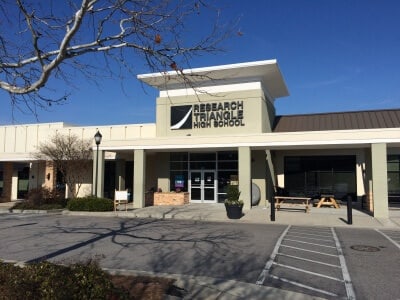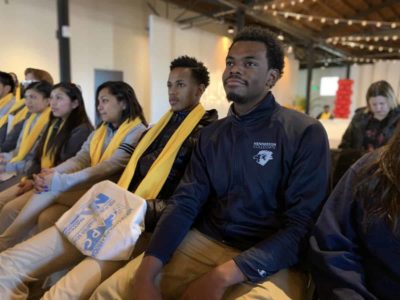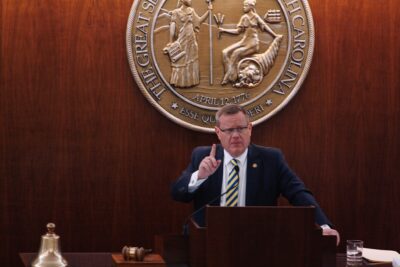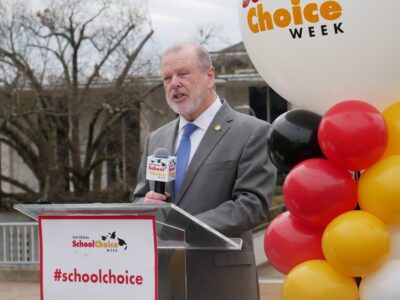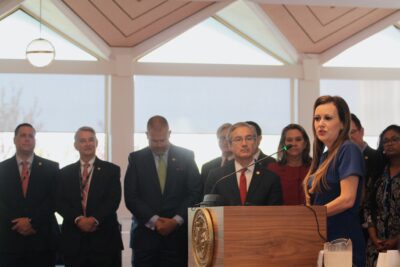

|
|
North Carolina has entered a pivotal stage in its nearly three-decade experience with charter schools. In 2023, the General Assembly enacted two companion laws on charter schools as a crucial component of its sweeping policy-and-funding decisions designed to widen “choice” in pre-K-12 education.
The General Assembly shifted decisive power to authorize new charter schools to a Charter School Review Board. The Republican-majority legislature empowered itself to appoint eight of the 11 review board members.
That action has caught the attention of charter advocates in the state and beyond. In a recent essay, for example, Michael J. Petrilli, president of the education think tank Thomas B. Fordham Institute, listed North Carolina among the “promising places” for enrollment growth.
“The Tar Heel State boasts a 19% charter growth rate since 2019,” wrote Petrilli, “and shows no signs of slowing down, thanks to a new statewide charter authorizer.”
Eight years ago, EdNC published an analysis under the headline, “20 years of charters: Where do we go from here?” that examined charter schools in North Carolina along with charters in six other states.
“Compared to other states, North Carolina has taken a relatively guarded approach to the charter experiment, only as recently as 2011 lifting the cap on the number of charter schools in the state,” EdNC reported in December 2015.
For 2024 and beyond, North Carolina has been repositioned, no longer “relatively guarded” in charter school governance. Thus, once again the question arises: Where do we go from here?
From back then to now
Charter schools emerged as a strain of education reform in the last decade of the 20th century. They had advocates across ideological and partisan lines.
Some reformers saw in charter schools a means to respond to the educational needs of at-risk students in big-city public school systems. Others viewed charters as an opportunity to create experimental environments to provide lessons to improve public education. Others put a high value on providing more choices for parents.
In his 2017 book, “Reinventing America’s Schools,” David Osborne characterized charters as a catalyst for creating 21st century public schools. He defined the “new formula – school autonomy, accountability for performance, diversity of school design, parental choice, and competition between schools.”
Minnesota enacted the first charter school law in 1991. Now, only four states have not passed a charter law. Across the nation, there are 7,800 charter schools of many varieties with enrollment of more than 7% of all public school students.
North Carolina enacted its initial charter school law in June 1996. In that year, Jim Hunt, a Democrat, was serving his third term as governor and running for his fourth. In the General Assembly, the Senate had a 26-24 Democratic majority, the House a 68-52 Republican majority.
The legislation creating charter schools said they were intended to:
- Improve student learning;
- Increase learning opportunities for all students, with special emphasis on expanded learning experiences for students who are identified as at risk of academic failure or academically gifted;
- Encourage the use of different and innovative teaching methods;
- Create new professional opportunities for teachers, including the opportunities to be responsible for the learning program at the school site;
- Provide parents and students with expanded choices in the types of educational opportunities that are available within the public school system; and
- Hold the schools established under this part accountable for meeting measurable student achievement results, and provide the schools with a method to change from rule-based to performance-based accountability systems.
The 1996 measure imposed a 100-school limit on the charter sector. Thirty-four charters opened for the 1997-98 school year, the number then rising swiftly to near the cap. In the 2001-10 decade, North Carolina had more than 90 charter schools in operation each year.
The North Carolina Center for Public Policy Research examined the state of charters schools in North Carolina after five and 10 years. Their 2007 report found “little evidence” that charter schools were transferring innovative practices to traditional public schools.
In the 2010 legislative elections, North Carolina Republicans won majorities in both the state House and Senate. In the 2011 session, the legislature voted to remove the 100-school limit. Democratic Gov. Bev Perdue signed the legislation, after Republican lawmakers agreed to put aside an effort to take charter-authorizing away from the State Board of Education.
Over the subsequent decade, the charter sector went on an upward trajectory. This school year, North Carolina has 211 charter schools — including two virtual — serving 145,274 students, according to a recent presentation from Alexis Schauss, chief financial officer at the N.C. Department of Public Instruction (DPI). Those students represent 10% of the state’s public school students as measured by allotted average daily membership (ADM). But that growth has not occurred evenly across the state.
Money, rules, results
In North Carolina as elsewhere, charter schools are public institutions. They are not governed by local elected boards of education; rather they operate autonomously under the terms of the charter with the state.
As public institutions, charters receive public funding. This school year, state funding for charter schools totaled $1 billion.
School enrollments range from fewer than 100 students to more than 2,000 students — with allotments for the 2022-23 school year ranging from $1 million or less for smaller schools to $14-15 million for the largest. The two virtual academies, persistently under scrutiny for weak academic performance, have the highest allocations — $21.2 million and $17.3 million.
It is a basic premise of chartering that the schools operate freed from the tight rules and regulations of traditional public schools. Charters, which enroll students regardless of attendance zones, are not required to provide bus transportation, though some do. Nor are they required to participate in the national school lunch program, though several dozen do. Half of a charter’s faculty need not be licensed teachers, though many are.
Still, as public institutions, charters are monitored for their financial viability and for the performance of their students. Low-performing schools are subject to intervention as are traditional schools. Charters are subject to limited years of operation: They are required to seek renewal, and ultimately their charter can be revoked.
The most recent charter schools report to the General Assembly shows:
- The academic performance of charter schools ranges from superior to adequate to low-performing in a pattern similar to traditional public schools. For example, in the 2021-22 school year, 18% of charters exceeded “growth” (meaning expected improvement in test scores), 44% met growth, and 38% did not meet growth.
- Nearly one-third of both charter and traditional schools were designated low-performing.
- While charter schools recently increased enrollment of economically disadvantaged students, the share of economically disadvantaged students at charter students (30.9%) remained below the level at traditional public schools (37.2%). Similarly, traditional public schools teach somewhat higher percentages of English learners and students with disabilities than charters.
- Since 1998, 87 charters have been terminated, including schools operating or preparing to operate. Fifty-three schools voluntarily relinquished charters, 11 were not renewed, and 22 were revoked by the State Board of Education.


Two laws set the third stage for charter growth
Education policy isn’t made in a vacuum. Research on learning and best practices can inform policymaking. Even so, events, trends, issues, and the design of election maps forge a political context for decisions by public officials.
The deadly COVID-19 outbreak, for instance, forced schools to shift from in-person to online instruction; it was during the pandemic that charter enrollment increased nearly 19%. At the same time, public education became a flashpoint in the heated pushback against instruction on race and gender.
Intense partisanship melted away consensus-building on charters, among many other issues. With a Republican super-majority in both the state House and Senate, the 2023 legislative session made three major interwoven policy-and-funding choices.
One, the legislative majority declined to provide teacher pay raises and general public-school support at the budget levels called for in court rulings designed to enforce the state constitutional requirement for a sound, basic education.
Two, the legislature approved an aggressive expansion of public subsidy for students in private schools — not only substantially increasing appropriations to the Opportunity Scholarship program but also offering subsidy regardless of family income without providing stabilization funding to public schools.
Finally, two companion laws on charter schools — House Bill 618 and House Bill 219 — set the third stage for charter school expansion. The 1996 law opened the first stage in developing a public charter sector in North Carolina, and the second stage came with the 2011 measure lifting the 100-school cap.
The legislature enacted a new law — House Bill 618 — which removed certain charter school powers from the State Board of Education and established the North Carolina Charter School Review Board (CSRB) giving it the power to grant, renew, amend, or revoke charters.
The former Charter School Advisory Board no longer exists.
The State Board of Education, under the law, hears appeals to review CSRB decisions. It also has authority to set rules for charters, but only rules based on CSRB recommendations.
The CSRB has 11 members — four designated by the Senate President Pro Tempore, four by the House Speaker, and two by the State Board of Education. The lieutenant governor has the remaining spot.
The new law directs the State Board of Education to appoint two members “who are charter school advocates in North Carolina.” In defining the qualifications of legislative appointees as well, the law says: “Members appointed to the Advisory Review Board shall collectively possess strong experience and expertise in public and nonprofit governance, management and finance, assessment, curriculum and instruction, public charter schools, and public education law. All appointed members of the Advisory Review Board shall have demonstrated an understanding of and a commitment to charter schools as a strategy for strengthening public education.”
The companion measure — House Bill 219 — encourages but does not mandate the CSRB to give preference to charter applicants seeking to teach at-risk students. It says, “The review board shall not consider any alleged impact on the local school administrative unit or units in the area served by a charter school when deciding whether to grant, renew, amend, or terminate a charter.”
The companion measure also allows for the enrollment of out-of-state and foreign-exchange students in charters. It tells public schools not to discriminate against charter students seeking services from the local district and allows counties to use property tax revenue to finance capital projects, including playgrounds and athletic fields. When a charter school ceases to operate, such facilities would become county property.
Democratic Gov. Roy Cooper vetoed both charter-school bills. He called the review board creation a “legislative power grab” that would put Republican “political friends and extremists” in charge. Cooper declared that the state should continue to limit growth of low-performing charters, saying that “allowing more students to attend failing charter schools risks their education and their future.”
The Republican-majority legislature voted to override the Democratic governor’s vetoes.
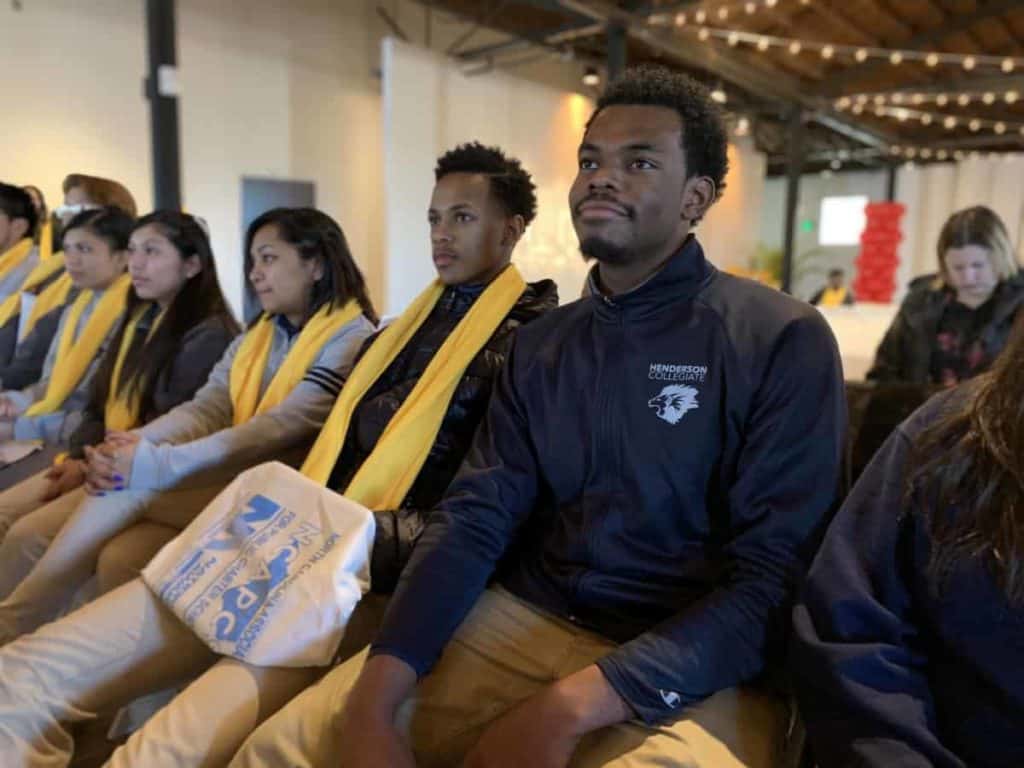

What now? Ongoing and new questions
As North Carolina transitions into its third stage of charter-school development, the state needs to wrestle with ongoing and new questions.
How will the relationship between the State Board of Education and the Charter School Review Board unfold? How quickly will the authorization of charters increase under the new review board and what impact will that have on districts?
Will the new charter laws soften or harden relationships at the district and county level? Budget transparency between districts and charters will be increasingly important, and the impact on districts when charter schools close will need to be better understood.
At the same time that it increased voucher subsidies for private schools and set the stage for expanding charter schools, the legislature also enacted another round of state tax reduction. In the future, to what extent will the expansion of school choice and the narrowing of the state revenue base limit funding to both public school districts and public charter schools?
Charter schools are nonprofits, but they may contract with for-profit management companies. With recent research indicating that schools run by for-profit management companies produce weaker educational outcomes than schools run by non-profits, the state needs to assess the scope and impact of the for-profit charter industry on charter students and charter schools across North Carolina.
The General Assembly has embraced a “choice” agenda in its approach to private, charter, and traditional public schools. Does North Carolina have a sufficient “quality” agenda and a driving determination to minimize low-performing schools and to maximize high-performing schools?
Charter schools are public schools. How different charter school advocates are aligning to support public schools and/or school choice relative to the current political landscape is worth watching against the backdrop of longer term demographic trends in North Carolina.
Indeed, the North Carolina of the 21st century surely has the capacity to assure students, parents, employers, and taxpayers their state will raise educational experiences for all — to make real the words of the Old North State Toast that “the weak grow strong, and the strong grow great.”



